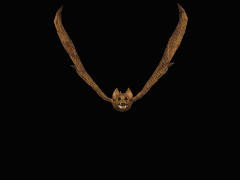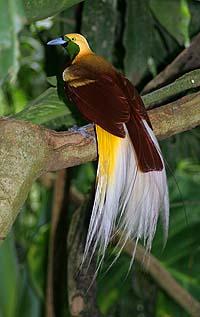


|
Paradisaeidae:
The birds of paradise are members of the family Paradisaeidae of the order Passeriformes. They are found in Australasia regions of eastern Indonesia, New Guinea and northeastern Australia. The member of this family are perhaps best known for the striking plumage possessed by the male of most species, which are used in courtship displays in order to attract females. Many species also have highly elongated and elaborate feathers extending from the tail, wings or head. Despite this extravagant plumage, they are anatomically among the most primitive songbirds. The best known for their plumage are the species of the genus Paradisaea, including the type species the Greater Bird of Paradise, Paradisaea apoda. This species was described from specimens brought back to Europe from trading expeditions. These specimens had been prepared by native traders by removing their wings and feet, which led to the belief that the birds never landed but were kept permanently aloft by their plumes. This gave both the name "birds of paradise" and the specific name apoda - without feet. Most species have elaborate mating rituals, with the Paradisaea species having a Lek-type mating system. Others, such as the Cicinnurus and Parotia species, have highly ritualized mating dances, with Parotia species presenting ballet tutu-like display plumage in a dance that is among the most astounding behaviors of all birds due to its completely accidental, but nonetheless uncanny resemblance to hula and limbo dances. Due to the peculiarities of their mating system, birds of paradise are among the birds where hybrids most frequently occur, together with ducks and hummingbirds, which both also have highly ornamental plumage in males and often form groups for mating purposes. Some scholars merge this family together with the Corvidae. |
